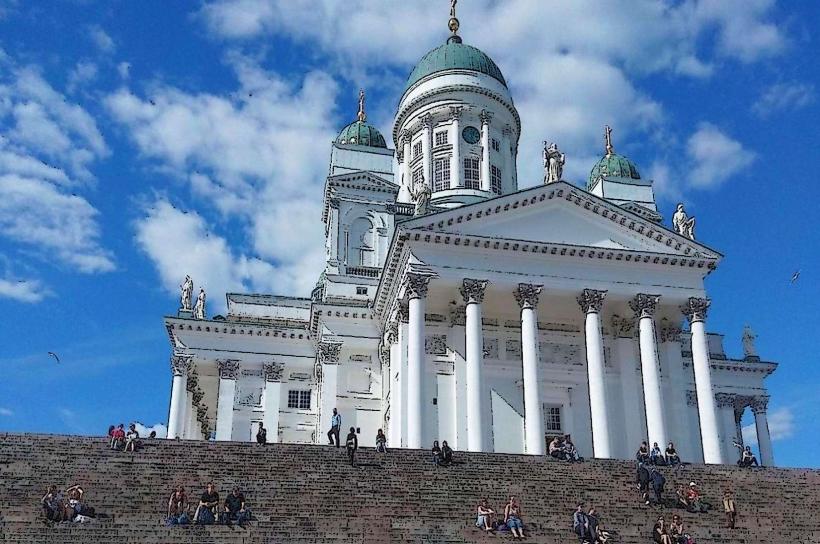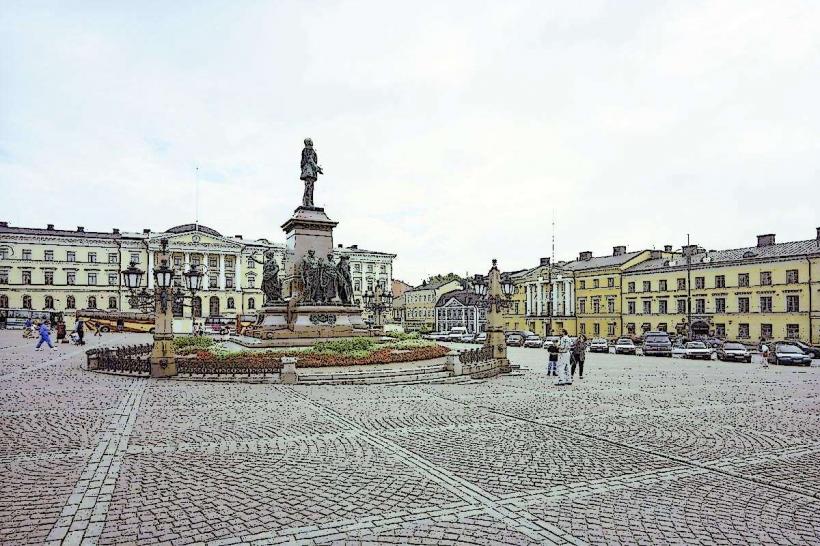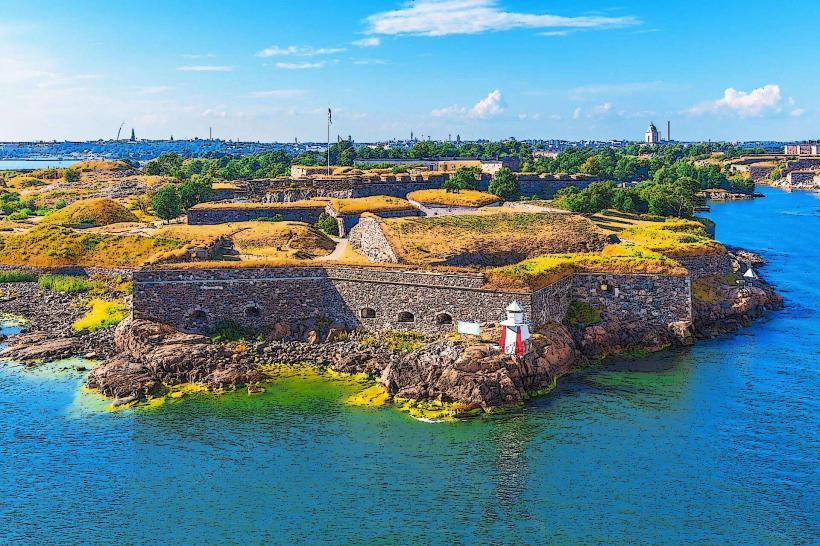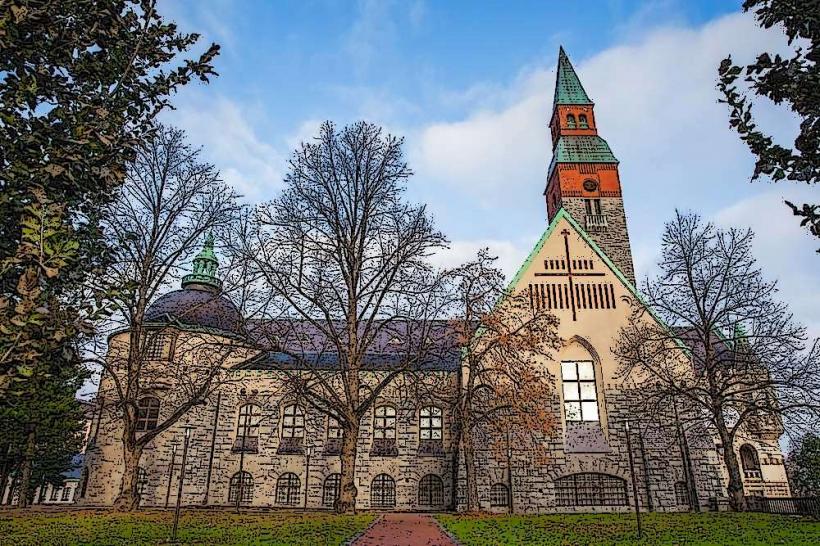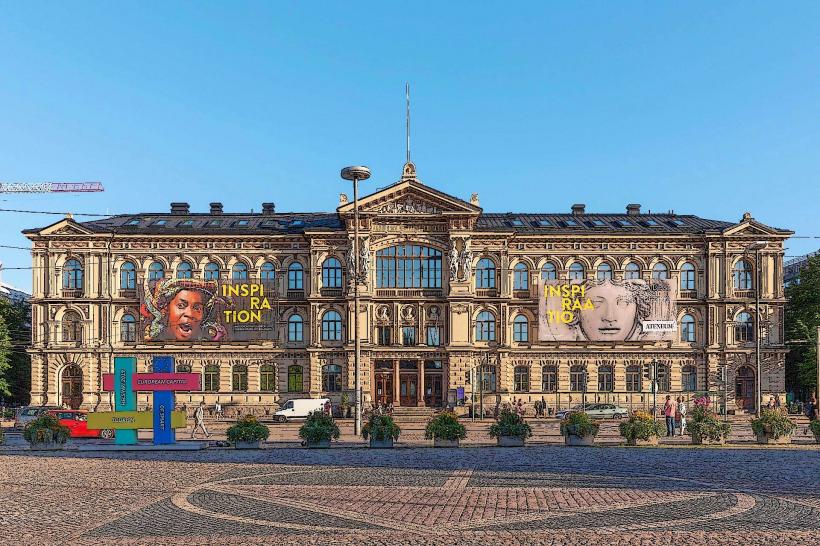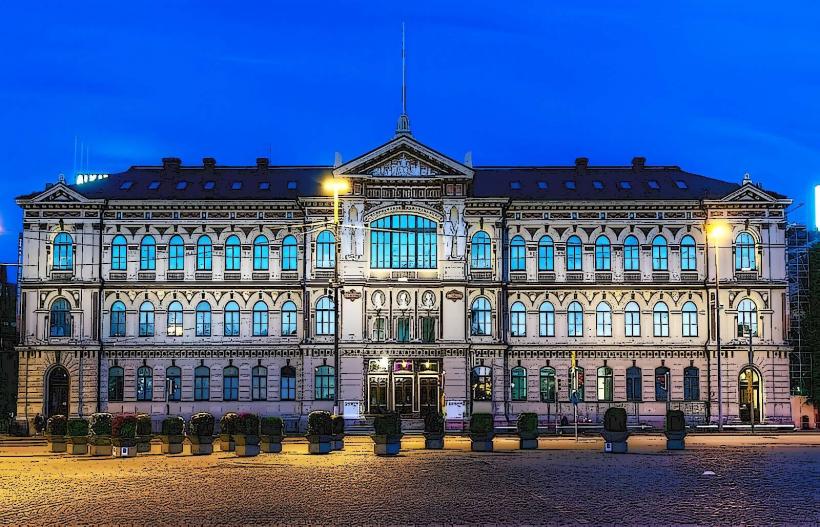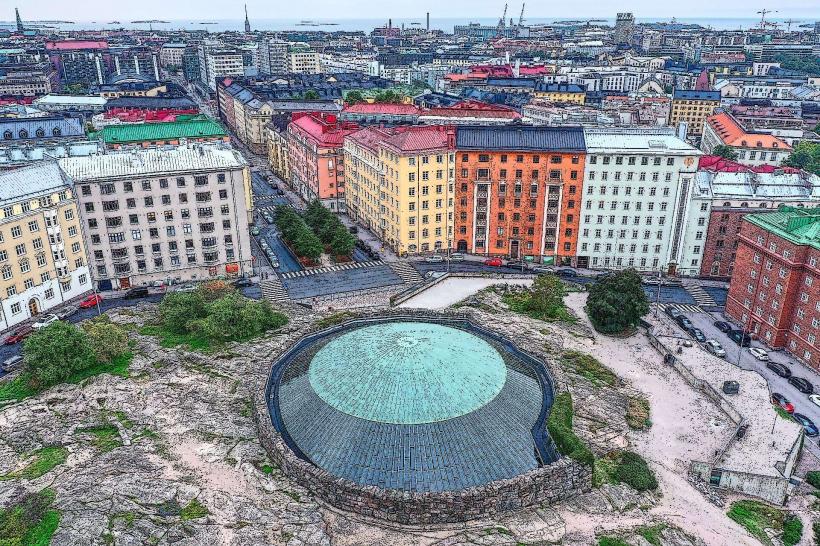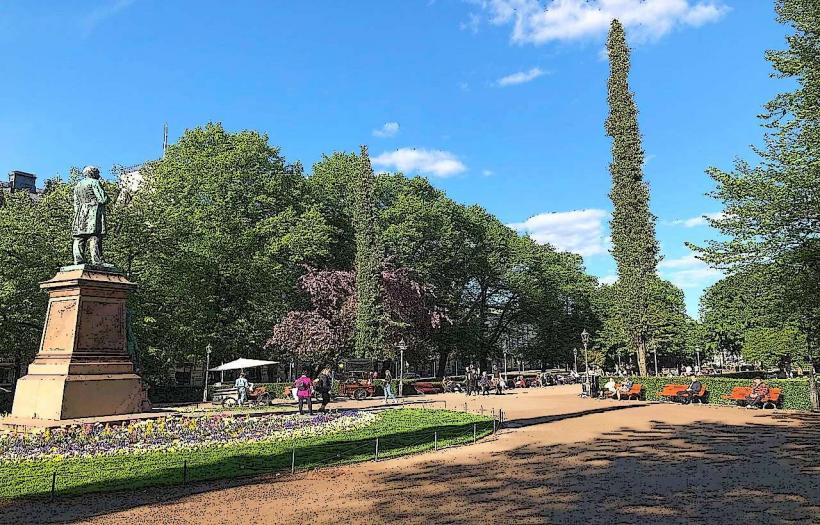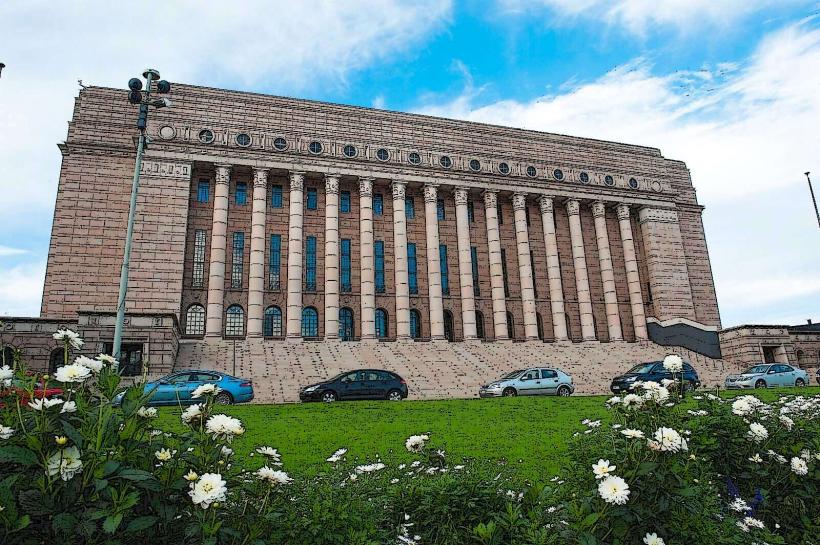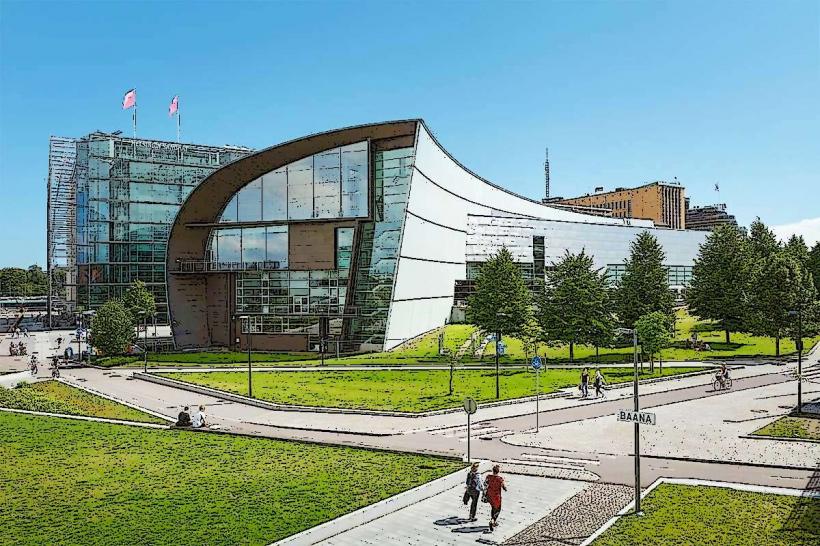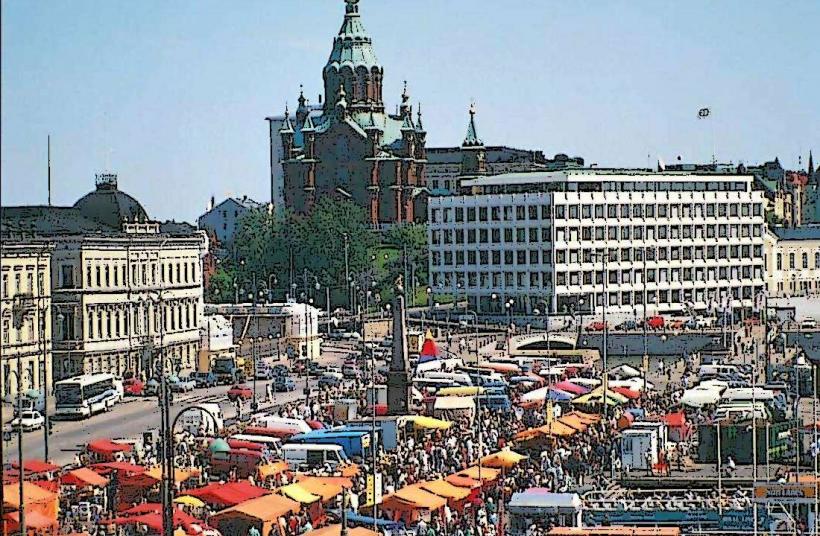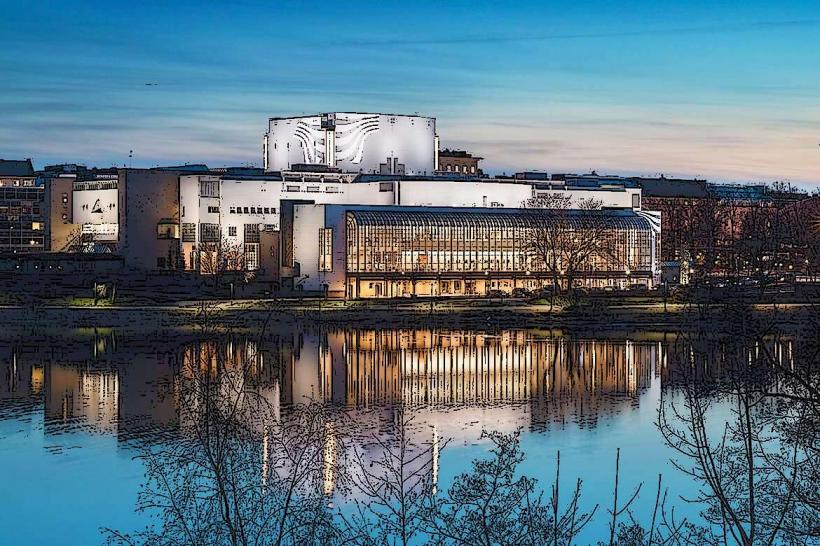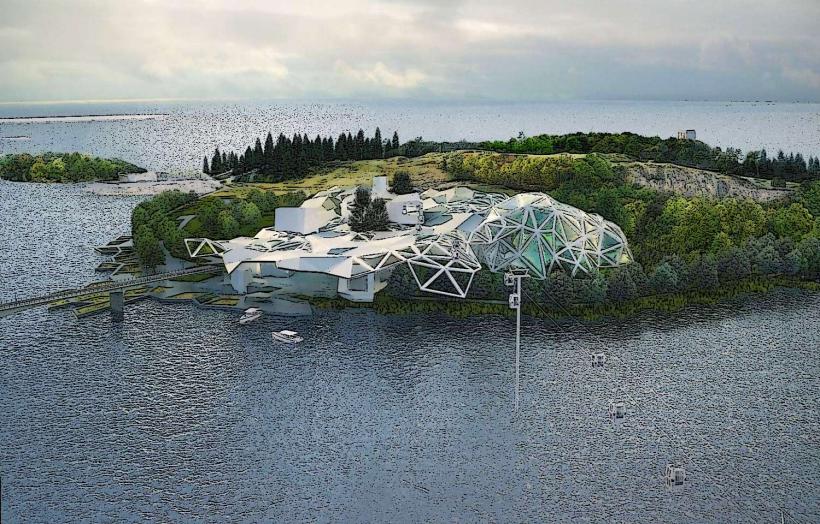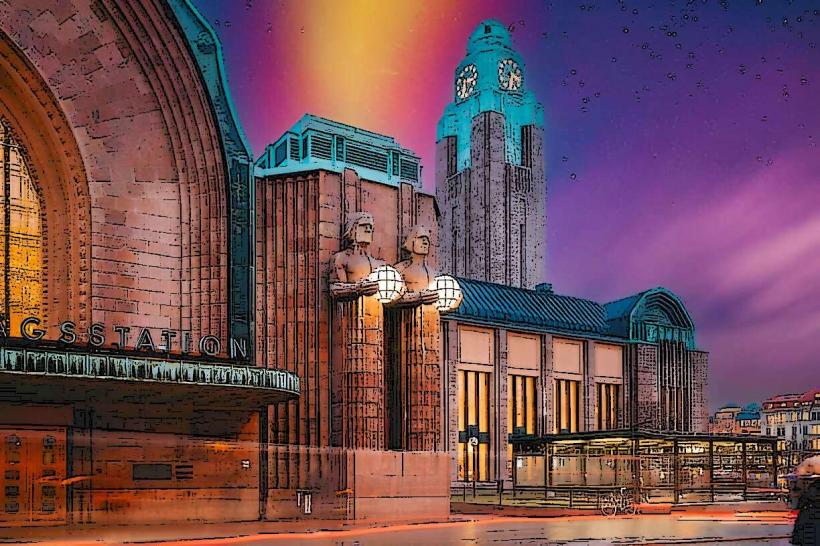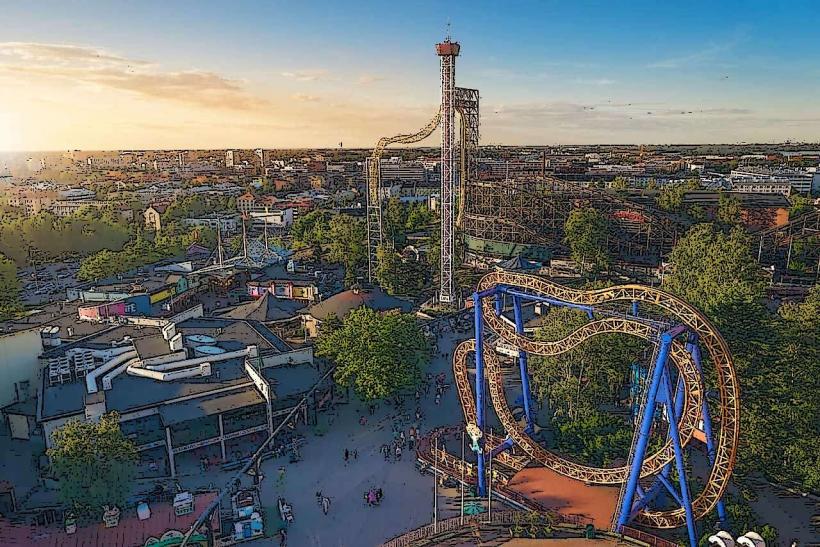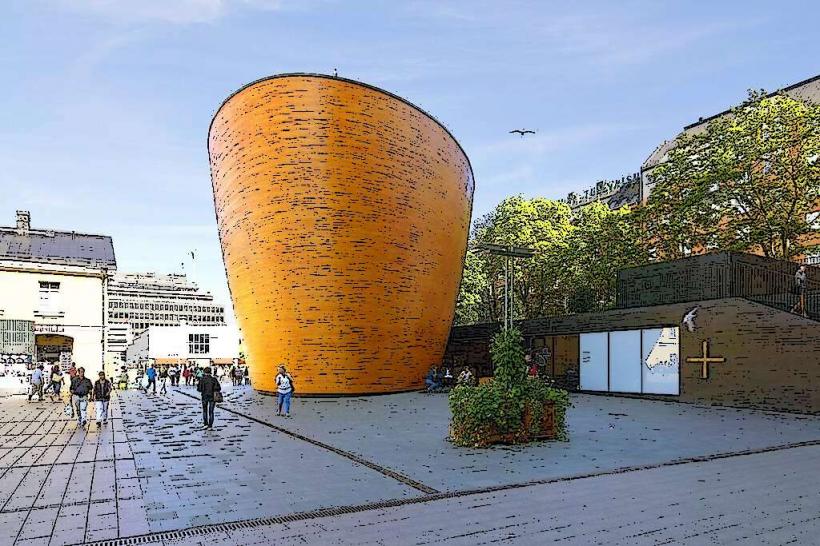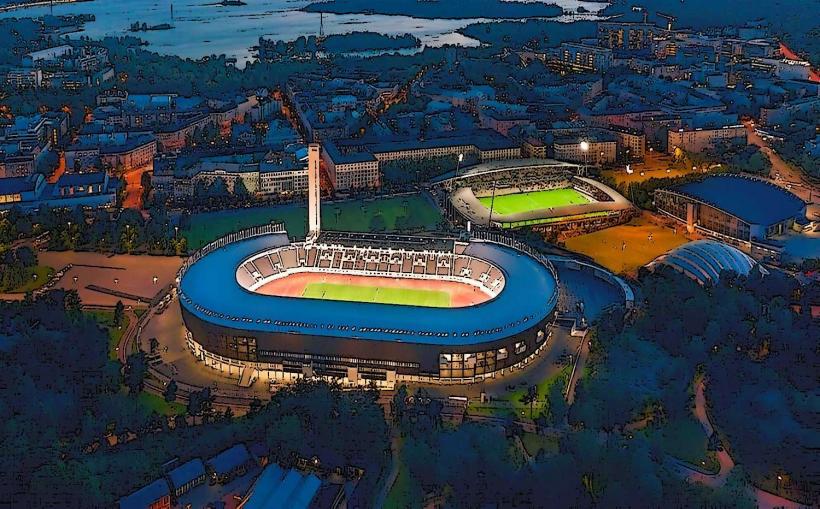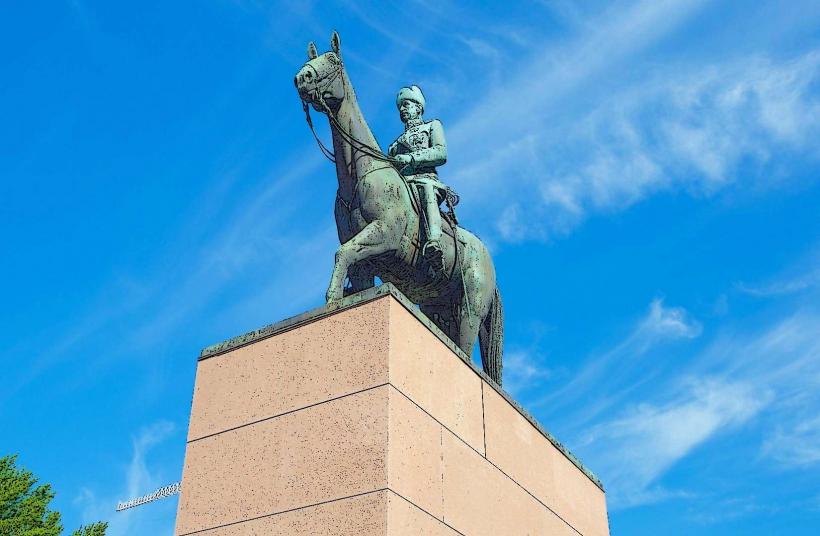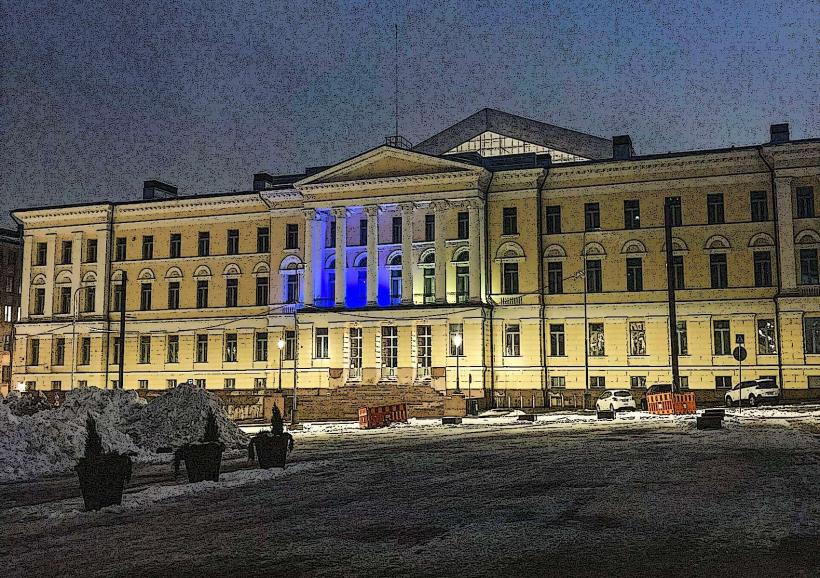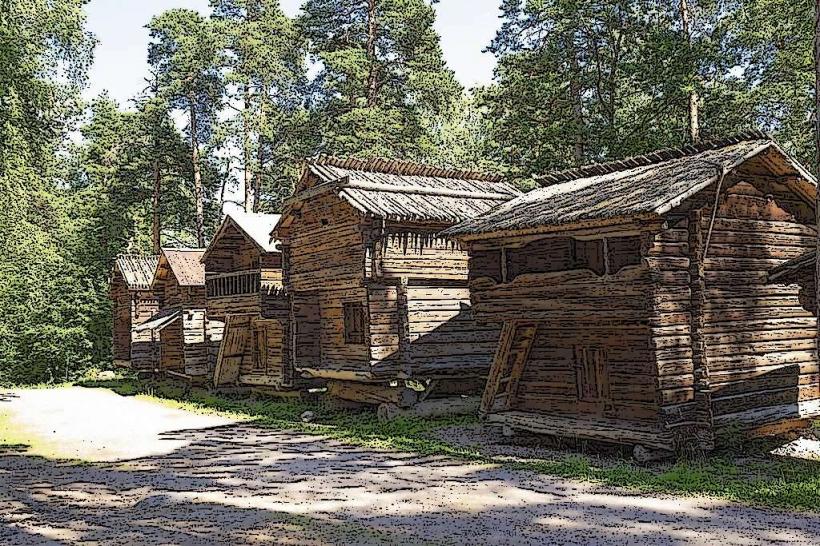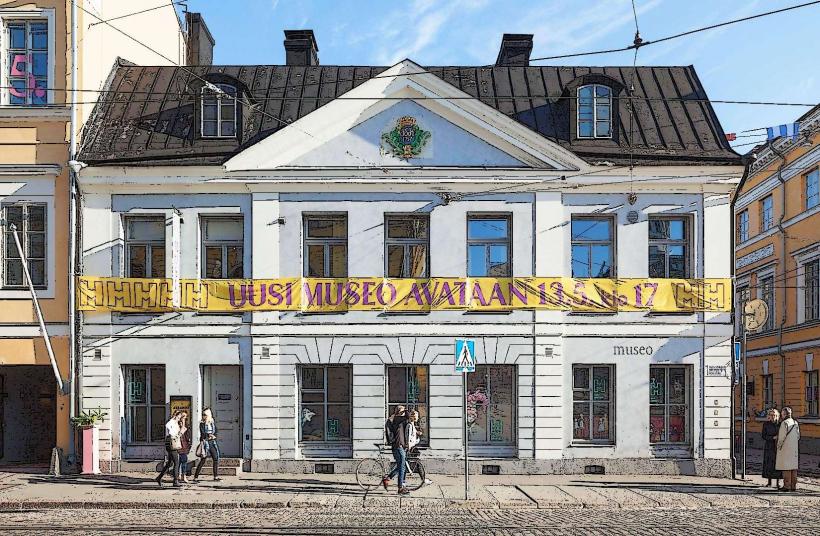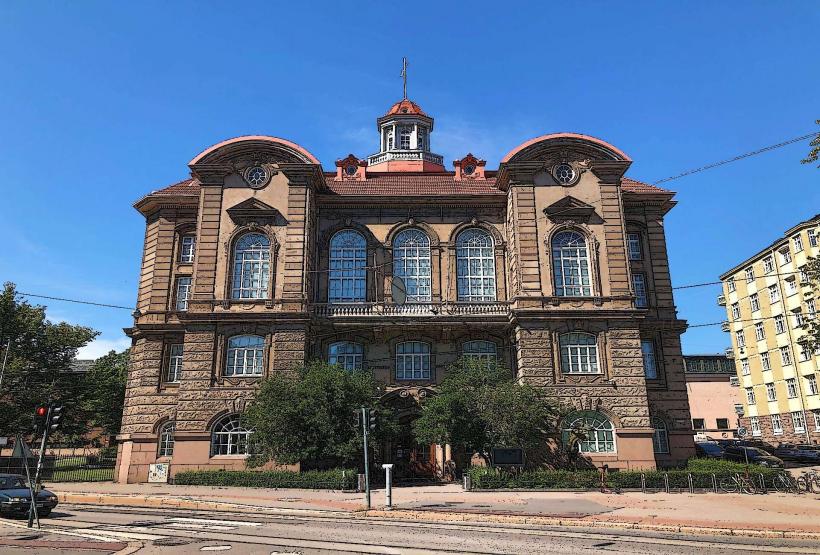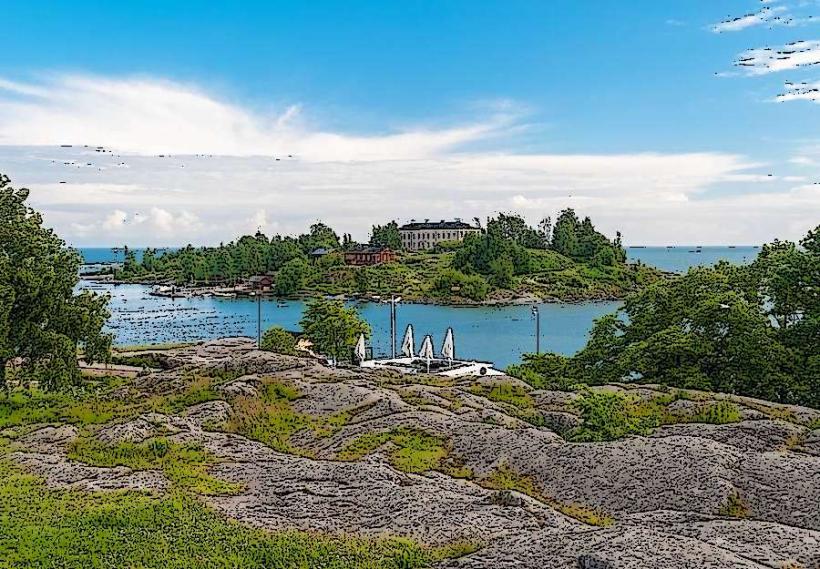Information
Landmark: Uspenski CathedralCity: Helsinki
Country: Finland
Continent: Europe
Uspenski Cathedral (Uspenskin katedraali) is an iconic Eastern Orthodox cathedral located in Helsinki, Finland. It stands as one of the most significant religious and architectural landmarks in the city. Here are the main details about Uspenski Cathedral:
Location and Historical Context
Uspenski Cathedral is situated on a hill in the Katajanokka district, overlooking the Helsinki Harbor. It is particularly prominent because of its location, offering spectacular views of the surrounding waters and the city. The cathedral was built during the time when Finland was part of the Russian Empire, and it reflects the historical influence of Russian Orthodox Christianity in the region.
Construction of the cathedral began in 1862, and it was completed in 1868, during the reign of Tsar Alexander II. The cathedral was designed to symbolize the Russian Empire’s power and influence over Finland, which was then a Grand Duchy within the empire.
Architectural Style
Uspenski Cathedral is designed in the Russian Revival style, an eclectic architectural style that sought to revive the traditional forms of Russian Orthodox church architecture. It was designed by the Russian architect Aleksandr Sergeyevich Mikhailov, and the building incorporates several traditional features of Eastern Orthodox church buildings.
- Exterior Design: The cathedral is built of red brick and features a series of onion domes, which are characteristic of Russian Orthodox architecture. It has a total of 13 domes, with the central dome being the largest and most prominent. The domes are covered in copper and are topped with gold crosses, making the cathedral stand out against the Helsinki skyline.
- Color and Symbolism: The red brick exterior gives the cathedral a distinct look compared to many other churches in Helsinki, which are typically built with lighter-colored stone. The use of brick was not only a stylistic choice but also a practical one, as it was more readily available at the time.
Interior Design
The interior of Uspenski Cathedral is equally impressive, with its richly decorated space reflecting the grandeur of Eastern Orthodox tradition. Some of its key features include:
- Iconostasis: One of the most important features of Eastern Orthodox churches, the iconostasis is a beautifully carved screen that separates the altar from the nave. The iconostasis at Uspenski Cathedral is particularly impressive, adorned with numerous religious icons depicting figures from the Bible, saints, and scenes from the life of Christ.
- Murals and Paintings: The walls and ceilings of the cathedral are decorated with colorful murals, many of which depict scenes from the New Testament. The artwork has strong Byzantine influences, with vibrant colors and intricate details.
- Altar and Chandelier: The altar is lavishly decorated, and the cathedral features a large, ornate chandelier that hangs from the center of the nave, adding to the cathedral’s sense of majesty.
Religious and Cultural Significance
Uspenski Cathedral is an important place of worship for the Eastern Orthodox Christian community in Finland. It is the main cathedral of the Finnish Orthodox Church, which is part of the larger Eastern Orthodox tradition. The cathedral serves as a center for religious services, including regular liturgies, weddings, and festivals, particularly those of major importance to the Orthodox calendar, such as Easter and Christmas.
The cathedral also holds historical significance as a symbol of the Russian Orthodox presence in Finland, which was a key part of the country's identity during the time of Russian rule. The building’s construction was part of a broader effort to solidify Russian cultural and religious influence in Finland during the 19th century.
Uspenski Cathedral Today
Today, Uspenski Cathedral is not only a religious site but also one of Helsinki’s most visited tourist attractions. It stands as a striking example of Russian Orthodox architecture and serves as a reminder of the historical connection between Finland and Russia.
- Tourist Attraction: The cathedral is open to the public, and visitors can tour the interior to admire its artwork, architecture, and religious artifacts. The church is often included in guided tours of Helsinki’s historical sites, especially for those interested in Orthodox Christianity and Russian influence on Finnish culture.
- Cultural Events: The cathedral hosts various cultural events throughout the year, including concerts, particularly classical music performances, due to its excellent acoustics and grand interior.
Accessibility
Uspenski Cathedral is located in the Katajanokka district, a short walk from the center of Helsinki. It is easily accessible by public transportation, and the area around the cathedral is known for its beautiful streets, many of which are lined with old wooden houses. The cathedral's hilltop location provides a wonderful vantage point for panoramic views of Helsinki Harbor and the surrounding islands.
Conclusion
Uspenski Cathedral is a stunning example of Russian Orthodox architecture, and its position in Helsinki’s skyline makes it an unmistakable landmark. From its red-brick exterior and onion domes to its richly decorated interior, the cathedral reflects both the religious and political significance of the time in which it was built. Today, it stands as a key symbol of the Finnish Orthodox Church and a testament to the enduring influence of Russian culture in Finland’s history. Whether as a place of worship, a cultural venue, or a tourist attraction, Uspenski Cathedral continues to be one of Helsinki's most important and beautiful sites.

